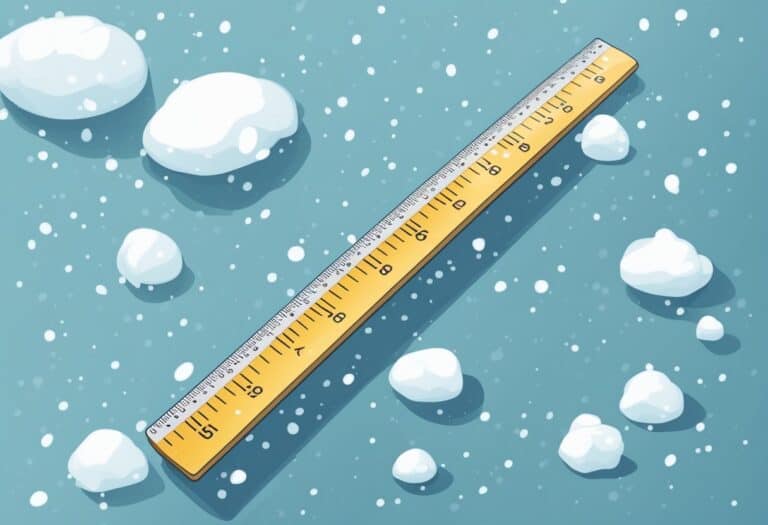Shoveling snow can be a physically demanding task, but with the right approach, you can clear your driveway or sidewalk quickly and with less strain.
Proper technique and the right equipment are crucial to efficient snow removal. Choosing a shovel that’s both suitable for the task and ergonomic can greatly reduce the effort required and the risk of injury. Before stepping out into the cold, ensure you’re dressed in layers and have taken the necessary precautions to stay warm and safe.
Efficient snow shoveling is not just about speed—it’s about managing your energy and taking care of the environment as well. Understanding effective techniques, such as pushing snow instead of lifting, or how to shovel in patterns, can maximize your efforts, reduce back strain, and ensure a clean, safe surface.
After you’ve cleared the snow, proper post-shoveling activities, including using environmentally safe de-icers, can prevent ice buildup and ensure long-term safety for yourself and others.
For efficient snow shoveling, choose an ergonomic shovel, dress in warm layers, push snow when possible, and use eco-friendly de-icers post-shoveling. Prioritize safety to avoid strain or injury.
Choosing the Right Tools for Efficient Snow Removal
When facing a blanket of snow on your driveway or sidewalk, it’s crucial to have the right tools for efficient snow removal. Equipping yourself properly not only quickens the process but also minimizes strain on your body.
The quintessential tool is the snow shovel. An ergonomic shovel with a curved handle reduces back bending, ideal for shoveling large amounts of snow. Choose a shovel with a plastic blade for lighter snow removal equipment; they are typically lighter and easier to handle than metal blades.
For tougher jobs, consider a shovel with metal blades. They’re more durable, capable of chipping away ice and heavy snow. Their sturdy nature, however, means they can be heavier and require more effort to use.
When shopping for shovels, look for options with an adjustable handle length to match your height, which helps maintain proper posture. The blade size is also important — larger blades can move more snow, but smaller blades are easier to manage and lift.
Beyond shovels, a snow blower can be a game-changer, especially for clearing large areas. They significantly reduce the time and physical effort required to remove snow.
If you’re dealing with accumulation on your roof, a snow rake is your solution. These specialized tools help pull down snow safely from the roof, preventing potential damage from heavy loads.
| Snow Removal Tool | Best Use Case | Considerations |
|---|---|---|
| Ergonomic Snow Shovel | Small to moderate snowfall | Blade material, handle length, and comfort |
| Metal Blade Shovel | Dense, compacted snow and ice | Weight and durability |
| Snow Blower | Large driveways and significant snowfall | Initial cost, maintenance, and storage space |
| Snow Rake | Accumulation on roofs | Reach, ease of use, and roof material safety |
Ultimately, your choice in equipment should align with both the typical snowfall in your area and the physical demands you are comfortable with.
Preparing Yourself for Safe Shoveling

Before venturing out into the winter chill for snow shoveling, it’s crucial to prepare both your body and mind. The following steps ensure you’re adequately equipped and warmed up, minimizing the risk of injuries and health complications.
Dressing Appropriately for the Cold
To maintain body heat efficiently, start with a moisture-wicking base layer followed by insulating fleece or wool, and top it with a waterproof outer layer. Wear a hat and gloves to prevent significant heat loss. Your boots should be waterproof and insulated, with enough room to accommodate thick wool socks without restricting circulation. A face mask can protect against biting winds and help warm the air you breathe.
Proper Warm-Up to Prevent Injuries
Like any physical activity, a warm up is essential before you start shoveling snow. Perform light stretches focusing on your arms, legs, and back for at least 5 minutes to prepare your muscles for the exertion ahead. Jog in place or do some jumping jacks to get your blood flowing and to gently elevate your heart rate.
Understanding the Risks of Physical Exertion
Shoveling snow can be a high-intensity workout, and sudden physical exertion, particularly in cold weather, increases the risk of a heart attack. Listen to your body, take breaks as needed, and stay hydrated. Remember to shovel smaller amounts of snow at a time and use ergonomic shoveling techniques to reduce strain on your body.
Effective Snow Shoveling Techniques
Shoveling snow effectively not only increases efficiency but also minimizes the risk of injuries. Mastering proper form and technique ensures that you handle snowfall with greater ease and safeguard your well-being during the winter months.
Proper Lifting to Avoid Back Injury
Lifting snow incorrectly is a common cause of back injury. To avoid strain, stand with your feet hip-width apart for proper balance and good posture. When you lift with the shovel, bend at the hips and knees, not your back, and scoop small amounts of snow at a time. Keep the load close to your body, and straighten your legs to lift, avoiding any twisting movements to reduce the risk of pain.
Pushing vs. Lifting Techniques
Depending on the depth of the snowfall, you’ll want to choose between pushing or lifting. For lighter accumulations, push the snow to the side instead of lifting. This method requires less energy and reduces stress on your body. When pushing isn’t feasible due to heavier snow, remember to lift using your legs and keep your back straight, engaging your core muscles for support, enhancing traction and stability.
Safe Methods to Break and Remove Ice
Removing ice can be particularly challenging. Apply ice melt products to help break down the ice, making it easier to remove. If you need to break through the ice manually, use a sharp tool like an ice chipper with care, and then shovel the broken pieces away. Always wear boots with good traction to prevent slips, and if large areas are iced over, work in sections to methodically clear the area, taking regular breaks to reduce exhaustion and injury risk.
Managing and Minimizing Effort
To efficiently handle snow removal, you need to use the right tools, understand the importance of rest and hydration, and be prepared in advance for snowfall. Utilizing equipment, taking breaks, and pre-planning are fundamental to managing your effort during snow removal.
Using Snow Blowers and Other Equipment
Snow blowers: Make sure your snow blower is in good working condition with regular maintenance. Becoming familiar with your machine’s capabilities allows you to clear snow more quickly than shoveling by hand.
- Leaf blowers: For lighter snowfalls, a leaf blower can be an effective tool for quick clear-up.
- De-icers: Apply de-icers in anticipation of snow to prevent ice from bonding to surfaces.
Taking Frequent Breaks for Rest and Hydration
- Rest: While it may seem counterintuitive, taking frequent breaks can actually increase overall efficiency by preserving your energy.
- Hydration: Keep water or warm drinks like tea or hot cocoa at hand to avoid dehydration.
- Monitor: Pay attention to your body’s signals, and don’t overexert yourself.
Techniques for Snowfall Predictions and Preparation
- Snowfall Predictions: Keep an eye on weather reports to anticipate the scale and timing of the snowfall.
- Snow Removal Plan: Devise a plan that includes pre-treating areas with de-icers and strategically deciding where to move the snow.
- Snowplow Service: If you anticipate heavy snowfall, consider scheduling a snowplow service in advance.
Clearing Specific Areas
When tackling the task of snow removal, it’s essential to apply specific strategies to different areas. Driveways and larger surfaces require a different approach compared to walkways and entryways, considering the size of the area and the type of surface you’re dealing with.
Strategies for Driveways and Larger Surfaces
For driveways and vast stretches, start by choosing a snow shovel with a wide, sturdy blade. Begin at the center and push the snow to the edges of the driveway, creating piles as you go. This method reduces the amount you have to lift and decreases the risk of strain. In case of heavy accumulation, remove the snow in layers rather than attempting to shovel deep snow all at once.
- Use a Tarp: For anticipated snowfall, cover the driveway with a large tarp. Once the snow stops, you can drag the tarp to the side to quickly clear the area.
- Apply Salt or Sand: After shoveling, apply salt to concrete surfaces to help melt any thin layers of ice and prevent re-freezing. Alternatively, sand can be used to provide traction.
Maintaining Safe Walkways and Entryways
Walkways and entryways require careful attention as they are high-traffic areas. Use a shovel that fits the size of the path to avoid damaging edges of the concrete or garden beds.
- Shovel Frequently: Clear the snow periodically to prevent buildup and formation of ice. This strategy keeps the task manageable and ensures safety.
- Non-corrosive Alternatives: Consider pet-safe, non-corrosive deicing alternatives to protect your concrete walkways and keep them safe.
Remember, keeping these areas clear not only facilitates safer passage but also helps prevent potential damage to the surfaces due to ice formation and excessive snow weight.
Post-Shoveling Activities
Completing the task of shoveling snow is only the first part of the job. What you do afterwards is crucial for both your equipment and your well-being to ensure you’re ready for the next snowfall.
Cleaning and Maintaining Your Equipment
After shoveling, it’s important to take care of your equipment to extend its life. Start by thoroughly cleaning your shovel with a brush to remove all snow and ice. Then, dry it completely to prevent rust. Store your shovel in a dry, accessible place. Regular maintenance will keep your shovel in good condition, ready for the next use.
Soothing Muscles After Shoveling
Shoveling snow is a vigorous exercise that can strain your muscles. To prevent stiffness, take the time to stretch your arms, legs, and back once you’re done. If you experience muscle soreness, consider using a heat pack or a muscle rub to help soothe the tension. Engaging in a cool-down exercise routine can assist in muscle recovery and prepare you for the next round of shoveling.
Preventing Snow Accumulation
To reduce future manual removal efforts, consider strategies to prevent snow accumulation. If you anticipate frequent snowfall, positioning a tarp in areas where snow buildup is common can save you time. Once the snow stops, simply drag the tarp to the side to clear the area. It’s also beneficial to have the contact information of a reliable snow removal company as a backup for heavy snowfall situations.
Environmental and Health Safety Considerations
When shoveling snow, safety should be your top priority to prevent injury and health risks. A common issue faced during snow removal is the risk of a heart attack, as the physical exertion coupled with cold weather increases the strain on your heart. Be mindful of your body’s signals; stop immediately if you experience pain or chest discomfort.
To minimize the chance of back strain, use an ergonomic snow shovel. These shovels are designed to reduce bending and heavy lifting. Always lift with your legs and tighten your core to support your back.
Numbness and frostbite are real concerns when working in cold conditions. Dress in layers, protect extremities with gloves and warm socks, and take frequent breaks to stay warm.
For icy conditions, sometimes a snow pusher or hiring a snow removal company may be safer and more efficient. If you opt to use ice melt or salt, apply it properly to reduce environmental impact and ensure surfaces remain clear. Elevated concentrations of chemicals for ice control can dilute quickly, but proper installation and maintenance of these products are crucial to minimize environmental risks.
- Checklist for Safe Snow Shoveling:
- Warm up before starting
- Use an ergonomic shovel
- Push, don’t lift, when possible
- Take breaks regularly
- Stay hydrated
Consider using alternatives to sodium chloride, such as calcium magnesium acetate, as it is less harmful to the environment, as noted in the study about the environmental impacts of chemicals for snow and ice control. Your awareness and actions can contribute significantly to both your health and environmental conservation during the snowy season.
Innovative Approaches and Additional Tips
In looking to improve the efficiency and safety of snow removal, you should consider utilizing alternative methods, enhancing traction where needed, and employing effective products. These strategies can significantly cut down your labor time and increase effectiveness when battling winter conditions.
Alternative Snow Removal Methods
Explore equipment like a snow-lifter to assist in heavy lifting, reducing the strain on your back. One such innovation is a snowblower, which helps you clear large areas rapidly. By using a snowblower, you can push the snow aside without the exhaustive labor that typically comes with shoveling. When using any snow removal equipment, always refer to the manufacturer’s guidelines for optimal performance.
- Equipment to consider
- Snow-lifter
- Snowblowers
Enhancing Traction on Slippery Surfaces
To avoid slips and falls, applying sand on icy areas can provide the necessary traction. Not only is sand cost-effective, but it’s also less corrosive than other materials. However, sand does not melt ice, so pairing it with a modest amount of ice melt can ensure both increased safety and the reduction of ice buildup.
- Materials for traction
- Sand (spreading it evenly on walkways)
- A mix of sand and ice melt (for slippery and icy patches)
Effective Use of De-icers and Salt
While salt is a common de-icing agent, strategic usage is crucial for it to be effective. Apply it early to prevent ice adhesion and immediately after snow removal to prevent a new layer of ice from forming. There are also various types of ice melt products available that are formulated to work at different temperature ranges, some of which are more environmentally friendly. Always check the product specifications to ensure it’s suitable for your temperature conditions and surface materials.
- De-icer application tips
- Apply salt in anticipation of snow or ice.
- Use ice melt following snow removal to maintain clear surfaces.
- Select the appropriate ice melt formula for your climate.
Frequently Asked Questions
If you’re looking to tackle the snow quickly and with ease, knowing the right techniques and tools is essential. These FAQs will guide you through the best practices for efficient and safe snow removal.
What is the best technique for shoveling snow to avoid back pain?
To minimize back strain while shoveling snow, maintain a straight posture and bend your knees to lift with your leg muscles. Hold the shovel close to your body and avoid twisting movements by pivoting your whole body.
Which pattern of shoveling snow is considered the most efficient?
The push-and-lift technique is highly efficient for shoveling snow. Push the snow towards the edge of the area you’re clearing and then lift and throw it out of the way, working in straight lines to manage small sections at a time.
What are some effective strategies for quickly removing snow from a driveway?
Clearing snow with each few inches of accumulation rather than waiting for the snow to stop falling allows for faster and easier removal. Apply a de-icing product in advance to help prevent snow from sticking and use a plastic shovel with a curved handle to reduce bending.
Are there any precautions to take to prevent a heart attack while shoveling snow?
Take frequent breaks, stay hydrated, and avoid heavy meals before shoveling snow to reduce heart strain. Use a small shovel to move lighter loads, and if you have a history of heart problems, consult with a healthcare professional before starting.
What are the key qualities to look for when choosing a snow shovel?
Select a snow shovel with an ergonomic handle to reduce bending, a lightweight plastic blade to prevent unnecessary lifting weight, and one that is appropriately sized to your height.
Can you suggest any alternative methods to clear snow without using a shovel?
Consider using a snow blower or throwing down snow-melting granules if shoveling is impractical for you. Hiring a snow removal service or investing in heated driveway mats could also be alternative options.







